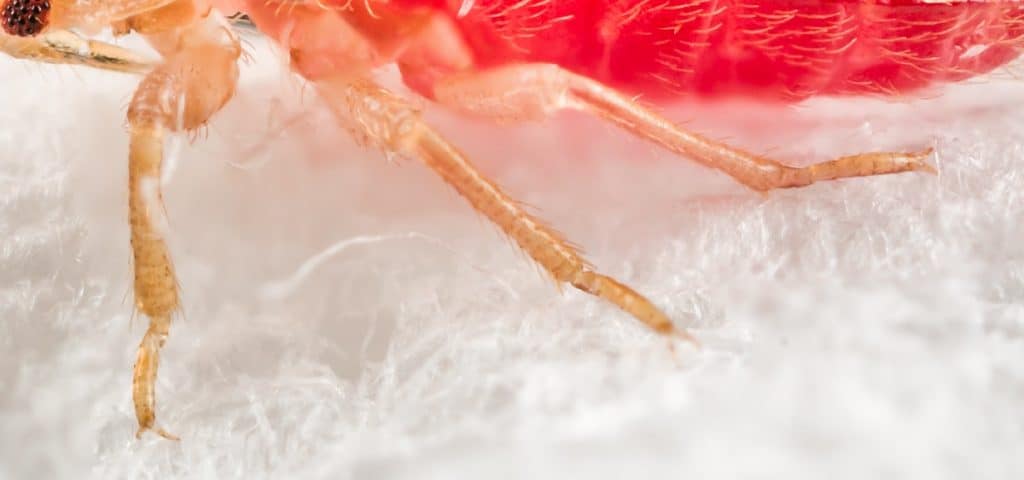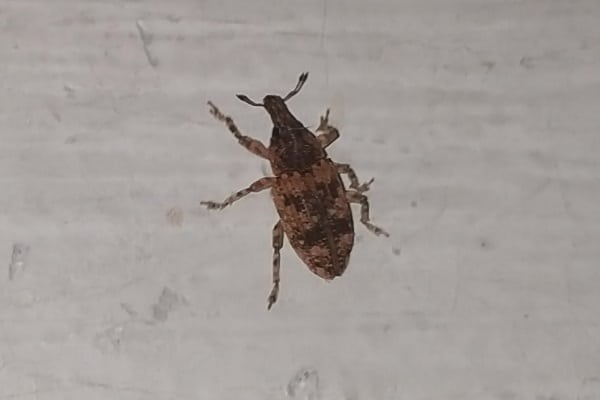Baby bed bugs are immature, juvenile bed bugs that have recently developed from eggs. But they can still be as much of an annoyance as the adult bugs. So, how do these bugs move around and infest your house? Are they capable of jumping or flying?
Bed bugs are incapable of flight as they do not possess any wings. They also have very weak rear legs, which means that they cannot jump a great distance. Bed bugs move around your house solely by crawling and then hide inside your bedsheets and mattresses.
Baby bed bugs share similarities with other insects and as such, people often mistake them for something else. So, knowing about these bugs in more detail should help you to eradicate them more effectively.
And that is where this article will help you. We will look at a baby bed bug’s appearance, behavior, and other features. We also highlight the differences between them and other insects and adult bed bugs.
Baby Bed Bugs: Appearance
Bed bugs have three distinct stages in their lifecycle – egg (larvae), nymph, and adult. And in each stage, they have a few key characteristics.
Bed bug eggs are tiny, pearl-white objects that sort of resemble a rice grain. The eggs then develop into nymphs, which are immature, growing insects. Finally, they become mature, adult bed bugs after molting five times (periodically shedding their skin). The adult bugs can then proceed to lay eggs.
When they are in the nymph stage, bed bugs have a whitish-yellow color. Their bottom side has black stripes due to their internals. After they feed on blood, their body gets a reddish tinge on them. They also swell up after a meal and become more visible to the naked eye. They are a lot harder to spot if they are unfed.
Bed bugs grow rapidly during this stage but their shape remains pretty much consistent. Every time they molt, they grow a bit bigger and can grow up to 4 to 5 mm before they reach maturity.
Maybe you want to know: How Do You Get Baby Bed Bugs?
Baby Bed Bugs vs. Adults
Though they are almost identical in shape, baby and adult bed bugs have some noticeable differences. You can use these points to easily tell them apart. But this becomes progressively harder as they get bigger. So, here are the features you can look at to distinguish between a baby and an adult bed bug:
The most obvious distinction is in their color. Baby or adolescent bed bugs can switch between a transparent, white complexion and a bright red hue. When they are unfed, baby bed bugs are almost invisible to the naked eye. But you can clearly notice dark stripes on their body, which are actually the complexion of their internal organs.

Adult bed bugs are almost exclusively brownish-red or rusty brown in color. The reddish tinge becomes more prominent after each blood meal. But unlike baby bed bugs, adult never loses their rusty color even when unfed. (Nevertheless, they do have some variety in their color as you can see here: Bed Bug Colors)
Another way to differentiate the two is through their size. Adults are 5 to 7 mm while nymphs are less than 4 mm. So, you can easily see adult bed bugs with the naked eye. But nymphs require a bit more searching.
Baby Bed Bugs and Wings
Although bed bugs belong to the same insect class as cockroaches, termites, and beetles, they share some very crucial distinctions. One of such distinctions is the fact that bed bugs do not have any wings.
It is common for many insects, such as the aforementioned termites and beetles, to develop wings during their lifecycle. When the insects reach full maturity, so do their wings. But a bed bug does not possess wings during any part of its development.
To be more specific, they have underdeveloped wing pads on the side of their thorax. These pads are not sufficient for lifting a bed bug. Without wings, bed bugs can hide in narrow places better. But they cannot fly from one place to another.
Baby Bed Bugs and Legs
An immature or adult bed bug has a total of six legs. Like other insects, their legs are attached to their thorax or chest region. These are tiny, hairy, and very thin limbs.
Bed bugs can use these legs to crawl around very quickly along the ground. But their legs are not powerful enough to propel them to a great distance.

Fleas are another group of wingless insects that are common in residential areas. They rely on their strong legs to cover large distances by jumping. You can use this knowledge to easily distinguish between various pests.
To put it simply, if you see any insect that resembles a bed bug and is jumping around, you can be sure it is a different type of pest.
Do Baby Bed Bugs Crawl (fast)?
Baby Bed Bugs can only move forward by crawling with their tiny and thin legs. These limbs are very weak and short compared to adult bed bugs or flea legs. The actual speed varies upon the different stages the nymphs have. The bigger the baby bed bug, the faster. It can range from an inch to a foot per minute.
3 Baby Bed Bugs Look-Alikes
Identifying bed bugs can be quite challenging as they share similarities with some other species of insects. Here, we highlight a few and explain how you can tell them apart:
Bat Bugs
These are probably the closest candidates you will find to bed bugs in terms of appearance and behavior. Bat bugs also feed on animal blood and hide in places where bats reside.
The only way to tell them apart is through the hairs on their head. Bat bugs have longer and more abundant hair compared to bed bugs.
Carpet Beetles
Here is another insect that often gets mistaken for bed bugs, especially when they are adults. They also live in residential areas but are not interested in human blood. Rather they feast on the fabric of your carpet or drape.

The most noticeable difference is that carpet beetles can fly. They are also more rotund in shape than bed bugs.
Booklice
Booklice are pale brown or yellowish little crawlers with long bodies. They resemble termites more than bed bugs. But many people mistake the two as booklice do have similarities to adult bed bugs.
Now that you know a bit more about bed bugs and their characteristics, you can hopefully deal with them better. The sooner you identify your pest problems accurately, the faster you can start to exterminate them.

